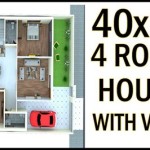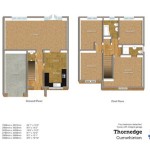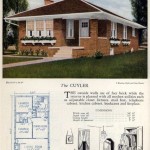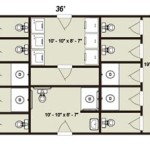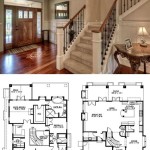Best Tools for Drawing Floor Plans
Creating a floor plan is a fundamental step in various endeavors, from designing a dream home to planning office layouts or simply visualizing space arrangements. The market offers a diverse range of tools tailored to different needs and skill levels, each with its unique strengths and weaknesses. Choosing the "best" tool ultimately depends on the specific requirements of the project, the user's technical expertise, budget constraints, and desired level of detail. This article explores several leading tools for drawing floor plans, examining their features, benefits, and drawbacks to assist in making an informed decision.
The spectrum of floor plan tools ranges from traditional pen-and-paper methods to sophisticated computer-aided design (CAD) software and user-friendly online applications. Each approach caters to a specific audience and provides varying degrees of precision, customization, and collaboration capabilities. Understanding the nuances of these tools is crucial for selecting the most appropriate option for a given project.
Understanding Project Requirements
Before delving into specific tools, it is essential to define the project requirements. Key considerations include the scale and complexity of the floor plan, the desired level of detail, the need for 3D visualization, and the importance of collaboration with other stakeholders (architects, contractors, clients, etc.). A small, simple floor plan for a room redesign might only require a basic online tool, while a large-scale architectural project demands the advanced capabilities of CAD software. The necessity for photorealistic renderings, accurate measurements, and compliance with building codes also influence the tool selection process.
Furthermore, the user's technical proficiency plays a significant role. Individuals with limited computer skills may prefer intuitive, drag-and-drop interfaces, while experienced designers and architects often require the precision and control offered by CAD software. Budget is another crucial factor. Free online tools are readily available, but they may lack advanced features and the ability to handle complex projects. Conversely, professional CAD software can be expensive, requiring a significant investment in licensing and training.
Finally, compatibility with existing workflows and file formats should be considered. If the floor plan needs to be integrated with other design documents or shared with collaborators who use specific software, it is essential to choose a tool that supports the required file formats (e.g., DWG, DXF, PDF).
Exploring Different Types of Floor Plan Tools
Floor plan tools can be broadly categorized into three main types: traditional methods, CAD software, and online floor plan applications. Each offers distinct advantages and disadvantages.
Traditional Methods: Pencil and paper remain a viable option for quick sketches and initial brainstorming. This method offers immediacy and flexibility, allowing designers to freely express ideas without the constraints of software interfaces. However, traditional methods lack precision and scalability, making them unsuitable for detailed floor plans or large-scale projects. Measurements and annotations must be added manually, and revisions can be time-consuming. Sharing and collaboration are also limited compared to digital tools.
CAD Software: CAD software, such as AutoCAD, Revit, and ArchiCAD, is the industry standard for professional architects, engineers, and designers. These programs offer unparalleled precision, control, and customization options. CAD software allows for the creation of complex floor plans with detailed measurements, annotations, and specifications. It also supports 3D modeling, rendering, and building information modeling (BIM) capabilities. BIM allows for the creation of intelligent 3D models that contain not only geometric data but also information about the building's components, materials, and systems.
However, CAD software has a steep learning curve and requires significant training to master. It can also be expensive, with licensing costs ranging from hundreds to thousands of dollars per year. Additionally, CAD software often requires powerful computers with high-performance graphics cards.
Online Floor Plan Applications: Online floor plan applications, such as Planner 5D, RoomSketcher, and Floorplanner, offer a more user-friendly alternative to CAD software. These tools typically feature intuitive drag-and-drop interfaces, pre-designed templates, and extensive libraries of furniture and fixtures. Online applications are often cloud-based, allowing users to access their floor plans from any device with an internet connection. They also facilitate collaboration, enabling multiple users to work on the same floor plan simultaneously.
While online floor plan applications are generally easier to learn and use than CAD software, they may lack the precision and customization options required for complex projects. The features available often depend on the subscription plan, with free versions offering limited functionality. Moreover, some online applications may require an internet connection to function properly, which can be a disadvantage in areas with unreliable internet access.
Comparing Specific Floor Plan Tools
To provide a more concrete understanding of the available options, let's examine some specific floor plan tools in more detail.
AutoCAD: AutoCAD is a flagship CAD software developed by Autodesk. It is widely used in architecture, engineering, and construction industries for creating 2D and 3D drawings. AutoCAD offers a comprehensive set of tools for precise drafting, annotation, and documentation. It supports various file formats, including DWG, DXF, and PDF, and integrates with other Autodesk products, such as Revit and Civil 3D. While AutoCAD is a powerful tool, it requires significant training and has a relatively high cost.
Revit: Revit, also developed by Autodesk, is a BIM software specifically designed for the architecture and construction industries. Revit allows users to create intelligent 3D models of buildings, incorporating information about the building's components, materials, and systems. This enables architects and engineers to analyze building performance, detect clashes, and generate accurate construction documentation. Revit is more complex than AutoCAD but offers significant benefits for collaborative design and construction projects.
Planner 5D: Planner 5D is an online floor plan application that is popular among homeowners and interior designers. It features an intuitive drag-and-drop interface, a vast library of furniture and fixtures, and 3D visualization capabilities. Planner 5D allows users to create realistic renderings of their floor plans, making it easy to visualize the finished space. While Planner 5D is easy to use, it may lack the precision required for professional architectural drawings.
RoomSketcher: RoomSketcher is another online floor plan application that offers a user-friendly interface and a range of features, including 2D and 3D floor plans, furniture planning, and virtual tours. RoomSketcher provides a free version with limited functionality and paid subscription plans that unlock additional features and higher-resolution renderings. RoomSketcher is a good option for users who want to create professional-looking floor plans without the complexity of CAD software.
Floorplanner: Floorplanner is a web-based floor plan tool that allows users to create and share interactive floor plans. It has a drag-and-drop interface and a library of objects to quickly design spaces online. Floorplanner also allows users to import existing blueprints or sketches and convert them into digital floor plans. The tool is suitable for both personal and professional use.
SketchUp: While primarily a 3D modeling software, SketchUp can also be effectively used for creating floor plans. Its intuitive interface and extensive library of components make it a versatile tool for visualizing spaces and experimenting with different design ideas. SketchUp offers both a free web-based version and a paid desktop version with more advanced features. Its ease of use makes it appealing to hobbyists and professionals alike, although precise dimensioning may require additional plugins or techniques.
Key Considerations for Choosing a Floor Plan Tool
Selecting the optimal floor plan tool involves a careful evaluation of project requirements, technical proficiency, budget, and collaboration needs. The following key points should be considered during the decision-making process:
Accuracy and Precision: For projects requiring precise measurements and adherence to building codes, CAD software is generally the preferred choice. Online floor plan applications may lack the accuracy and control needed for detailed architectural drawings.
Ease of Use: For users with limited computer skills or those who need to create floor plans quickly, online floor plan applications offer a more user-friendly alternative to CAD software. These tools typically feature intuitive interfaces and drag-and-drop functionality.
Collaboration Features: If collaboration with other stakeholders is essential, choose a tool that supports real-time collaboration, file sharing, and version control. Cloud-based online applications often excel in this area.
3D Visualization Capabilities: If visualizing the finished space in 3D is important, select a tool that offers 3D modeling and rendering capabilities. Some online floor plan applications provide realistic renderings, while CAD software offers more advanced rendering options.
Budget: Consider the cost of the software or subscription plan and any associated training costs. Free online tools may be sufficient for simple projects, but professional CAD software may be necessary for more complex endeavors.
By carefully considering these factors, users can select the floor plan tool that best suits their individual needs and project requirements. The "best" tool is ultimately the one that allows users to effectively communicate their design ideas, create accurate and detailed floor plans, and achieve their desired outcomes.

10 Best Floor Plan Features For Home And Remodeling Projects Cedreo

10 Best Floor Plan Features For Home And Remodeling Projects Cedreo

Best Floor Plan Popular Designs And Plans

Draw Floor Plans In Minutes Create 2d And 3d

Beginners Guide To Drawing A Floor Plan With Free

Free House Design Home And Plans

Floorplanner For Personal Use Easy Home Design Free Room Planner

Why Roomsketcher Is The Best Floor Plan Tool

Floor Plan Design 2d 3d Layouts With Ease

10 Best Floor Plan Home Design For Mac Of 2025 Free Paid

